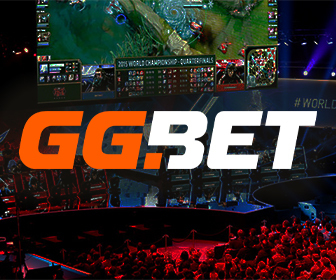Ever found yourself opening a loot or reward box in a mobile game? The psychology behind that irresistible urge to open something free (sometimes from watching an ad) is a finely tuned science.
According to a 2023 study, some sort of random-reward mechanism is being used in over 77% of top-grossing mobile games. These often appear as gacha draws, loot crates, mystery chests, and others. But the end goal is always the same: to keep you engaged.
The psychology of unpredictability
The thing with our brains is that they revel in and adore patterns, but they live for the surprise element. In behavioral psychology, this is called a variable-ratio reward schedule. In this system, the reward arrives after an unpredictable number of actions. Slot machines work in this way, as do many mobile games.
When players spin a digital wheel or pull for a rare character, the uncertainty triggers the anticipation of reward, flooding the brain with dopamine. Neuroscience shows it’s not the reward itself that spikes dopamine, it’s that anticipation of maybe getting it. This loop becomes self-reinforcing: the more unpredictable the outcome, the stronger the chemical pull to keep on going.
This is also where the near-miss effect comes in. Studies also show that narrowly missing a reward can stimulate the same brain regions as a win. Mobile developers know this all too well. The so-called “almost there” design visuals are all around. Glowing orbs, spinning icons, and slow stops spike the tension and amplify engagement.
But when reward systems become opaque or when the drop rates are hidden or heavily weighted, that excitement can morph into frustration and compulsion. And this is all too familiar to sports betting and casino players. In gambling contexts, the importance of trust and secure payment methods is paramount. The experienced punter will always point you in the direction of some of the well-known directories. These are basically places with curated lists of reliable websites that won’t take your money.
It can be further narrowed down to a specific point of interest. For example, players evaluating the best Neteller gambling sites are, in a sense, seeking transparency. They want to know that their transactions are protected. And Neteller’s presence across legitimate gambling platforms is tied to that reliability.
How mobile games hard-wire the loop
Look closely at the top-grossing mobile titles and you’ll see the same playbook repeated with small variations:
- Loot boxes and crates: The player earns or buys boxes that contain random items, often with unclear odds.
- Gacha systems: Borrowed from Japanese, players “pull” digital characters from banners or machines with limited-time drops.
- Spin wheels and daily draws: Even simple idle games add a free spin every few hours to re-engage players.
- Event lotteries or blind packs: Used to introduce rare cosmetics or timed events.
All of these feed into the same compulsion loop: anticipation → action → uncertain reward → repeat. Each cycle keeps the player’s engagement metrics climbing.
Even small UI touches reinforce this loop. Animations that delay outcomes, satisfying sounds, or rarity effects like “epic” colors and sparkles all prime the player for the next hit of anticipation.
What makes these rewards more powerful is the mystery. When combined with a sense of progress or scarcity, it turns into an engagement goldmine. In essence, the player is rewarded for persistence itself, whereby the act of trying again becomes its own reward.
The cost of randomness
Studies have found consistent overlaps between loot-box spending and gambling behavior. One paper published by Cornell University found that players who spend heavily on randomized systems score higher on gambling-severity scales than those who don’t. The mechanics may not meet the legal definition of gambling, but the brain’s response is almost identical.
This overlap isn’t coincidental. Many designers borrowed reward structures directly from casino design. But in mobile gaming, these are wrapped in cute graphics and character collections, making the link less obvious to players.
Awareness as armor
The first step is recognizing what’s happening under the hood. When you open a loot box, the anticipation you feel is carefully engineered. Being aware doesn’t ruin the fun but puts you in control.
Here’s what helps:
- Check whether a game publishes drop rates (many regions now require it).
- Set personal spending or time limits before diving into reward loops.
- Pay attention to how often a game rewards “near misses” instead of wins, as it’s a sign the system is tuning your excitement.
For designers, the challenge is using randomness ethically. Random rewards can make gameplay thrilling, but they should supplement a solid core loop, not replace it. Consider:
- Adding “pity systems” (guaranteed rewards after a set number of failures).
- Being transparent about probabilities and odds.
- Mixing predictable progress (leveling, achievements) with occasional surprise drops.
- Monitoring player data for signs of frustration or overspending.
Trust between player and developer is fundamental. Onboarding isn’t just about teaching controls. It’s about setting expectations. The same logic applies to randomized rewards: clear communication keeps players invested without crossing ethical lines.
The fine line between engagement and exploitation
Randomized rewards tap into something ancient in our psychology—a craving for surprise, a thrill of possibility. That’s why they’re so effective, and why they’re also so easy to abuse.
When balanced well, they enhance excitement and keep things fresh. When misused, they blur the line between fun and manipulation. The best designers know that genuine engagement doesn’t require tricking players.
So, the next time you chase that rare character or shiny chest, it’s worth pausing for a second. Ask yourself: Is this play, or is it programming? Recognizing the difference might be the most rewarding pull of all.

